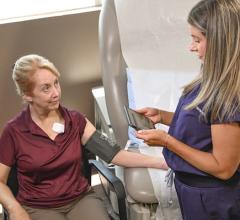
Getty Images
July 5, 2023 — With heart disease the most common cause of death worldwide, researchers have attempted to quantify how cumulative exposure to multiple risk factors, like high blood pressure, obesity, and elevated cholesterol, affect an individual’s risk of having a heart attack or stroke. Using sophisticated modeling techniques, University of Maryland School of Medicine (UMSOM) researchers have developed a new tool that can predict the risk of heart disease in those over 40 based on their total exposure, through the years, to heart disease risk factors.
The new research findings, published in March in the Journal of the American College of Cardiology, used data from the Coronary Artery Risk Development in Young Adults (CARDIA), which recruited about 5,000 healthy young adults from four U.S. cities and followed them for 30 years. The researchers were able to calculate from this data the cumulative effect of individual risk factors, such as high blood pressure, diabetes, elevated cholesterol, and the additive effects of multiple risk factors that can cause cardiovascular disease.
Black patients were found to have a 46 percent greater risk of developing heart disease compared to white patients. This finding is independent of other risk factors, including family history, smoking habits, and college attendance (a marker of socioeconomic status). Black patients also were found to be more susceptible to cardiovascular effects of uncontrolled high blood pressure as compared to white patients. White patients, on the other hand, were found to be more susceptible to elevated low-density lipoprotein (LDL) levels than Black patients.
“These data make clear the importance of instituting risk-factor reduction strategies as early in life as is feasible to reduce time-related cumulative exposure to harmful risks,” said study lead author Michael J. Domanski, MD, Professor of Medicine, at UMSOM. “These results suggest that a self-declared Black racial status is a marker of underlying and unexplained differences in risk-factor impact.”
The results of this study could help guide physicians in developing personalized prevention strategies for individual patients. Public health policymakers also could use the new risk calculation tool to assess the likely impact of proposed heart disease prevention programs, while researchers could use it to help design clinical trials to test heart disease prevention strategies.
"By examining the long-term impact of multiple risk factors on cardiovascular disease, our study highlights the importance of cumulative exposure in determining an individual's risk,” said Xin Tian, PhD, Adjunct Professor at UMSOM, and a biostatistician at the National Heart, Lung, and Blood Institute (NHLBI), part of the National Institutes of Health (NIH). “Our findings underscore the need for personalized prevention strategies that address both the time course and severity of these risk factors. As scientists, our duty is to use this knowledge to inform the development of effective prevention and intervention strategies that can reduce the burden of cardiovascular disease on individuals and society as a whole."
The R Shiny app, developed in this study, is a tool that allows medical providers to insert cardiovascular risks, patient history, and patient race to determine individual risks and how best to address them. Electronic medical records are now widely available, making the development of tools such as the R Shiny app possible. R Shiny can be used to estimate cardiovascular risks after age 40 based on severity of risk factors earlier in adulthood. The app is hosted on NHLBI’s website.
“Our study demonstrates the power of innovative statistical data-science approaches in enabling biomedical researchers to gain deeper insights into complex health issues, such as cardiovascular disease. We were able to develop risk prediction models that provide a more accurate and personalized assessment of an individual's risk,” said Colin Wu, PhD, Adjunct Professor of Medicine at UMSOM and a mathematical statistician at NHLBI, part of NIH.
During the two-decade follow-up period after age 40, the researchers found that 316 people in the study experienced their first cardiovascular event, including heart disease, strokes, and congestive heart failure.
“This new tool could be used by cardiologists to convince patients to take the necessary steps to lower their risk of heart attack or stroke by quantifying how much their risk would improve if they better managed, for example, their cholesterol and hypertension,” said Mark Gladwin, MD, Dean, University of Maryland School of Medicine, Vice President for Medical Affairs, University of Maryland, Baltimore, and the John Z. and Akiko K. Bowers Distinguished Professor. “That could have a significant impact particularly in vulnerable populations who have not been aggressively treated for cardiovascular risks in the past due to long-standing health inequities.”
For more information: https://www.medschool.umaryland.edu/


 January 10, 2026
January 10, 2026 









